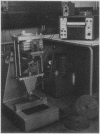Abstract
Theoretical consideration has been given to the use of pendulum machines which are used to examine the frictional properties of human joints by incorporating them as fulcra. As a result, a new type of pendulum machine has been built which incorporates the facility to apply sudden loads to the joint on starting the swinging motion, and also the ability to measure directly the frictional torque experienced by the joint. The results obtained from natural hip joints indicate the presence of squeeze film lubrication under conditions of sudden loading of a joint. In addition, a self-generated fluid film process was observed at low loads while at higher loads boundary lubrication appeared to be important. These results have been used to describe the lubrication regimens occurring in a normal activity such as walking. A single experiment carried out on a hip from a patient suffering from severe rheumatoid arthritis has also been reported and the frictional resistance was seen to be increased fifteenfold compared to a normal hip.
Full text
PDF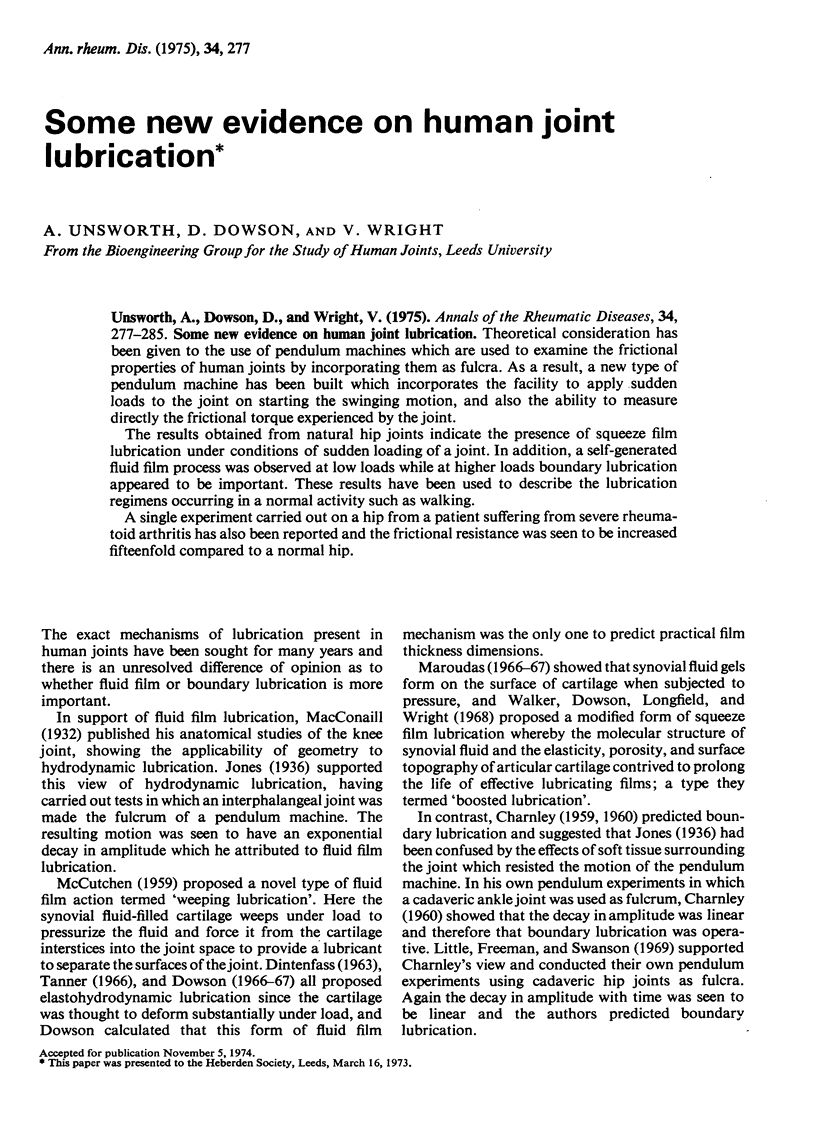
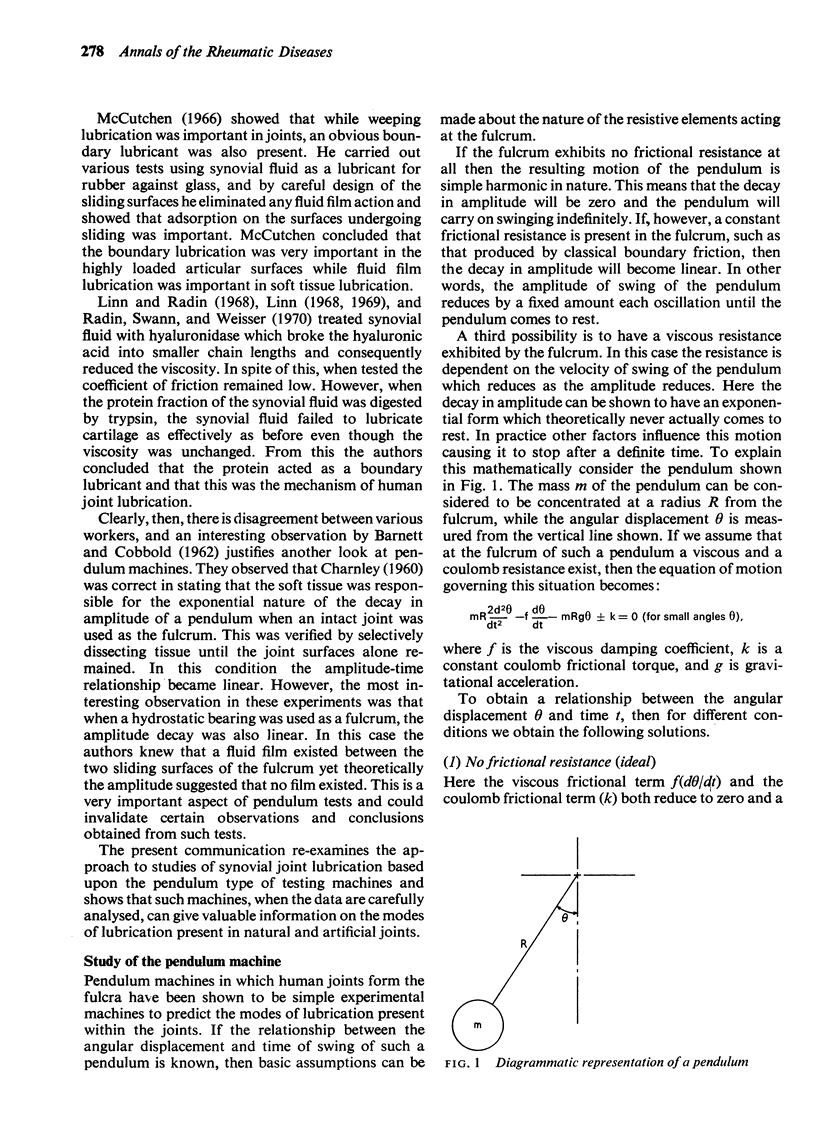
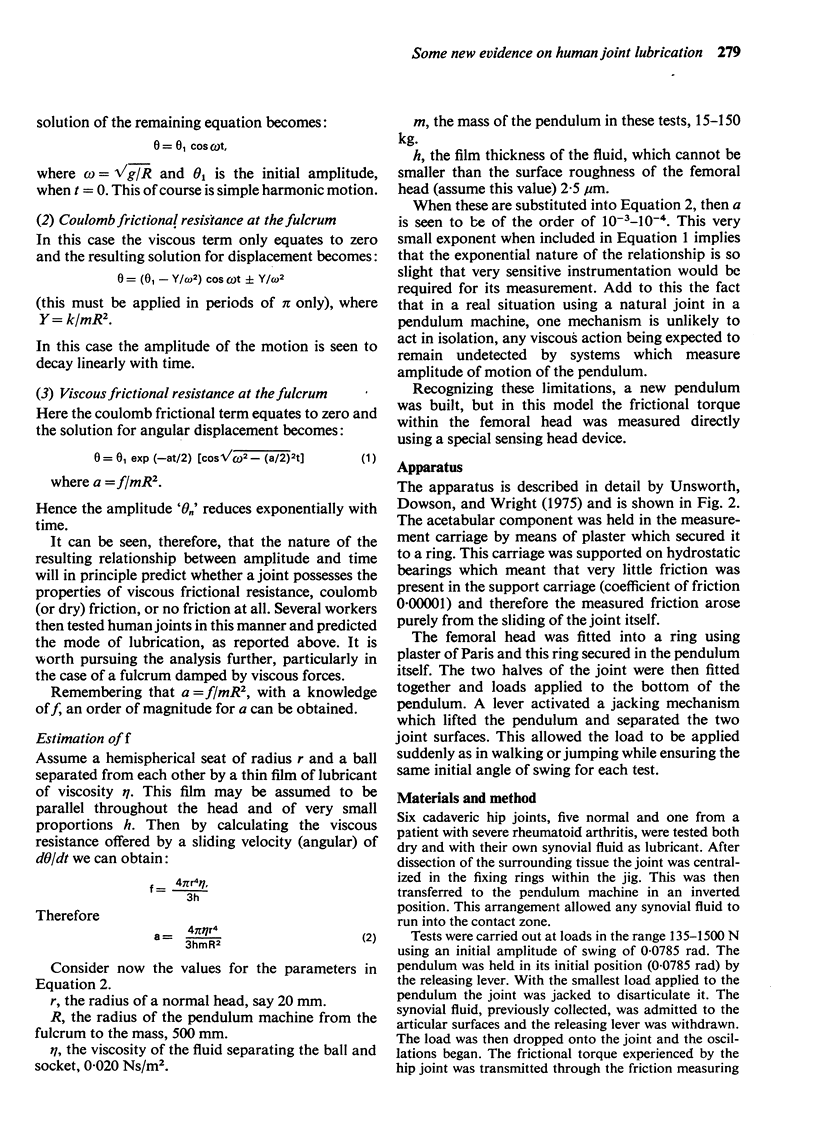
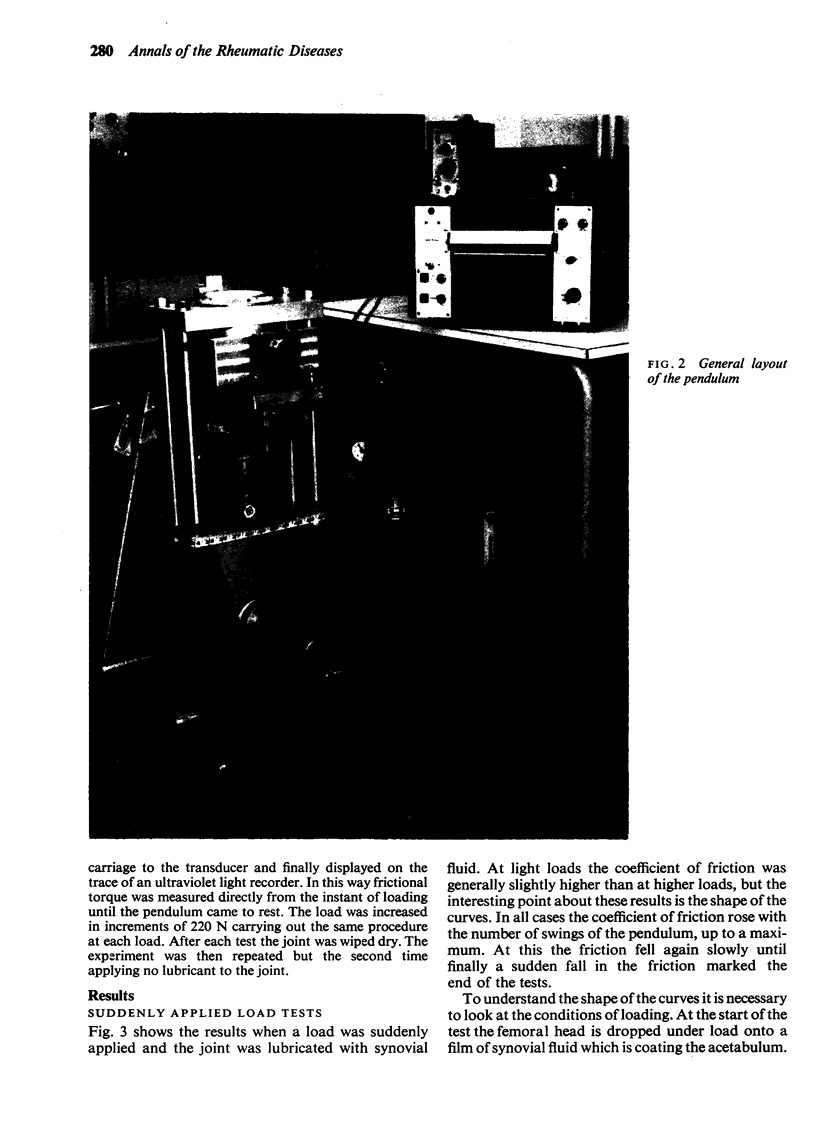
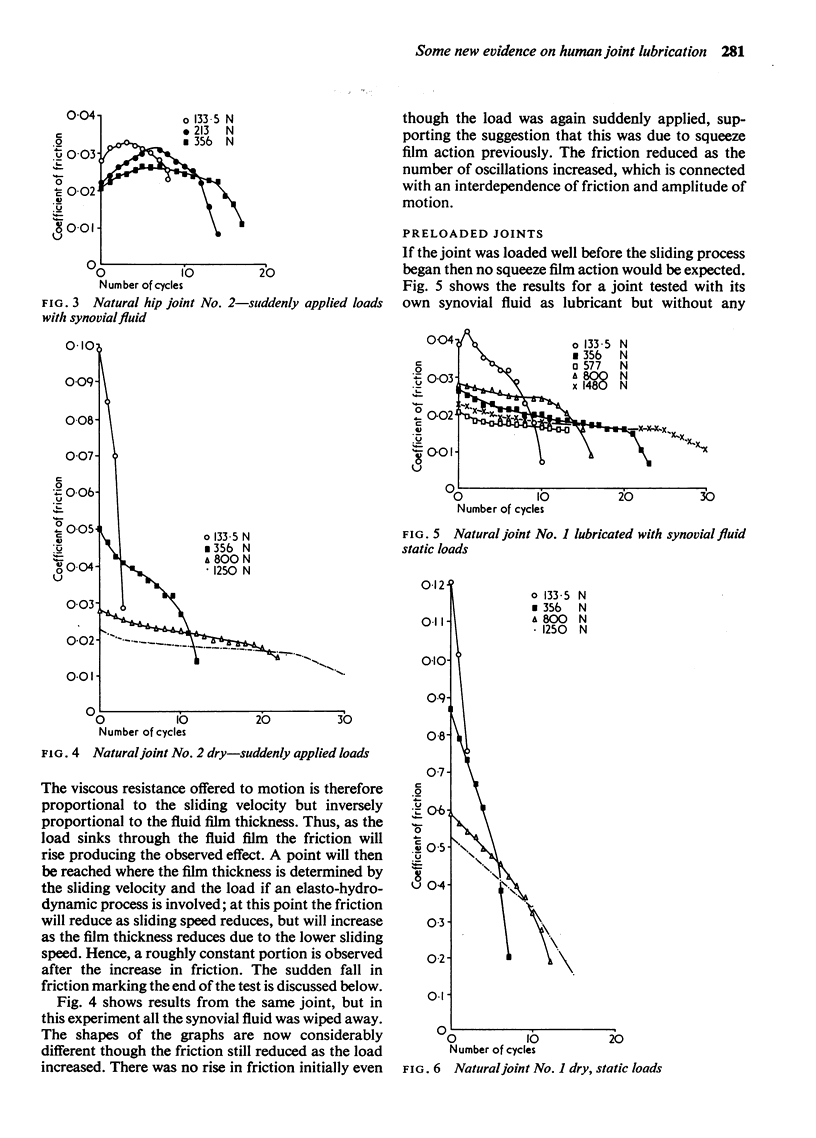
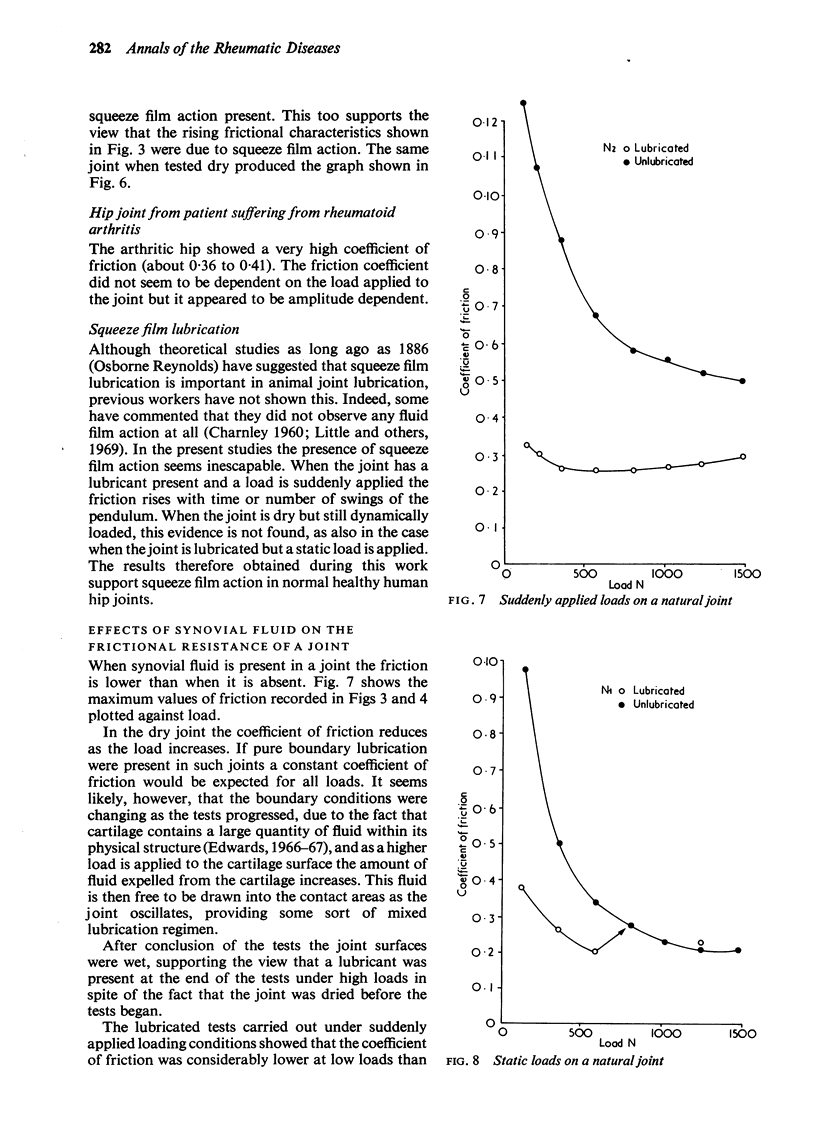
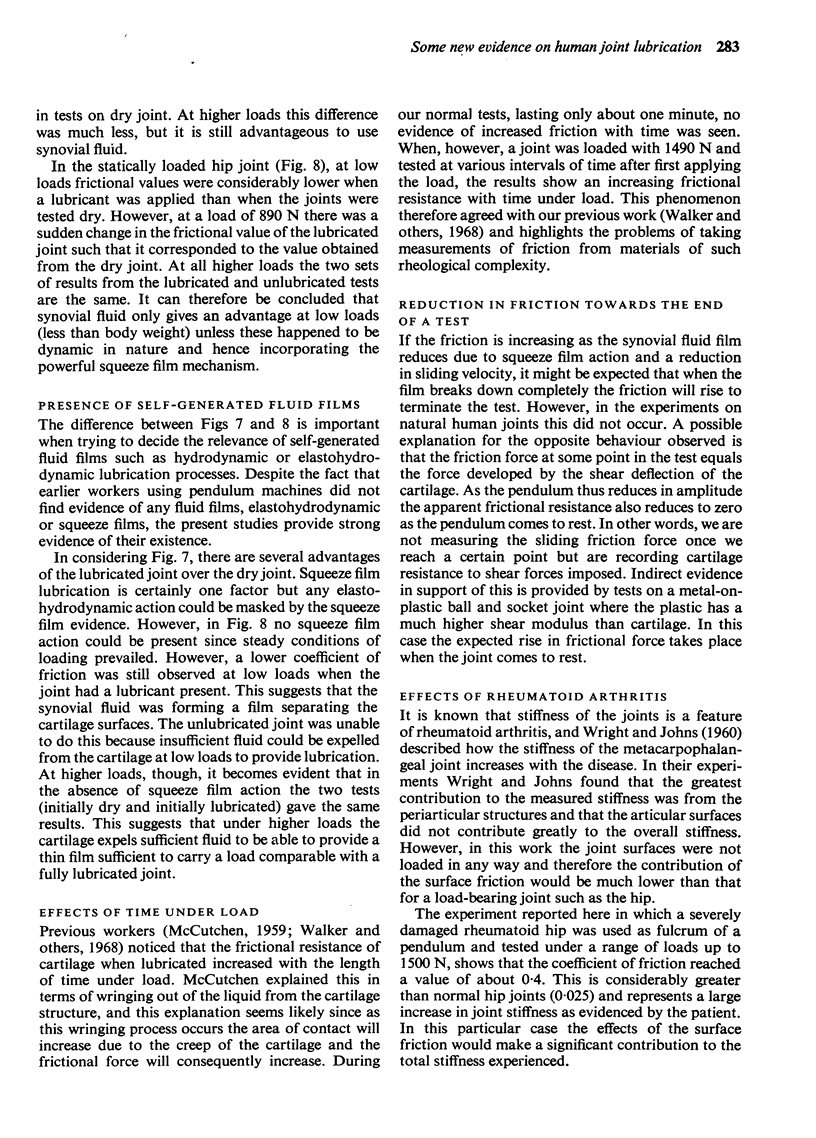
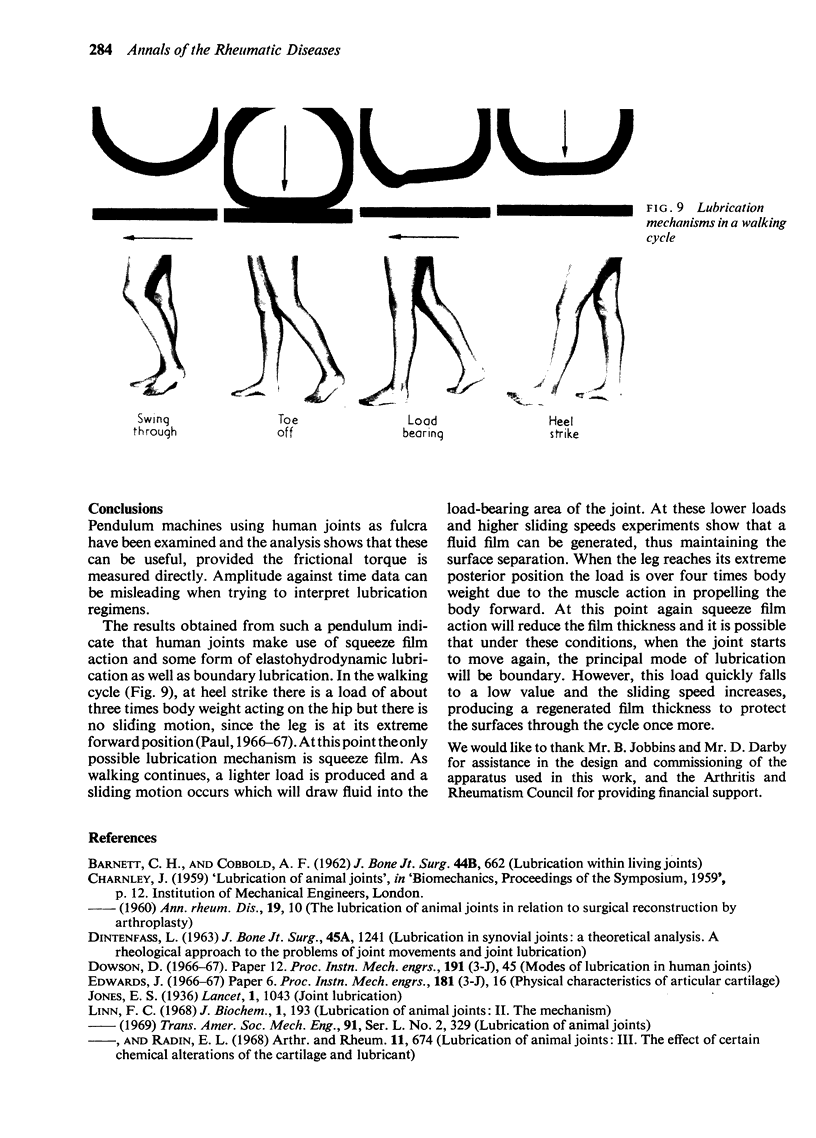
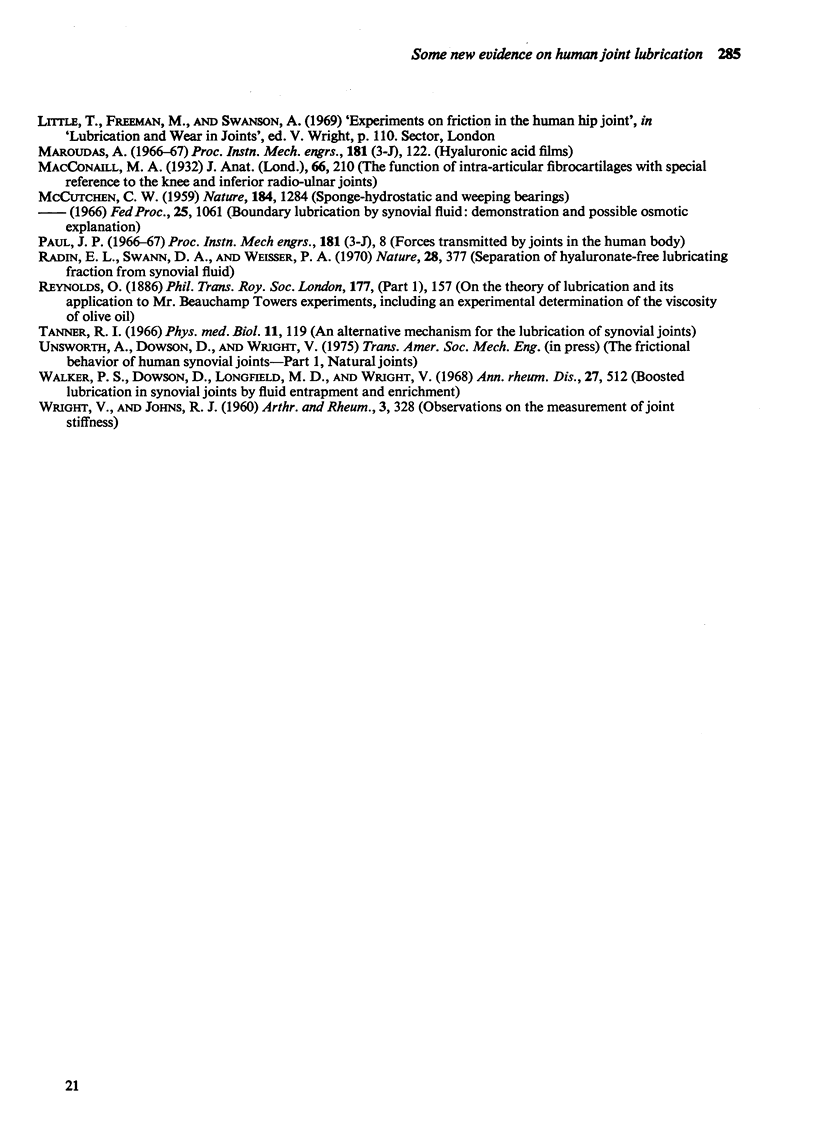
Images in this article
Selected References
These references are in PubMed. This may not be the complete list of references from this article.
- DINTENFASS L. LUBRICATION IN SYNOVIAL JOINTS: A THEORETICAL ANALYSIS. J Bone Joint Surg Am. 1963 Sep;45:1241–1256. [PubMed] [Google Scholar]
- Linn F. C. Lubrication of animal joints. II. The mechanism. J Biomech. 1968 Aug;1(3):193–205. doi: 10.1016/0021-9290(68)90004-3. [DOI] [PubMed] [Google Scholar]
- Linn F. C., Radin E. L. Lubrication of animal joints. 3. The effect of certain chemical alterations of the cartilage and lubricant. Arthritis Rheum. 1968 Oct;11(5):674–682. doi: 10.1002/art.1780110510. [DOI] [PubMed] [Google Scholar]
- Macconaill M. A. The Function of Intra-Articular Fibrocartilages, with Special Reference to the Knee and Inferior Radio-Ulnar Joints. J Anat. 1932 Jan;66(Pt 2):210–227. [PMC free article] [PubMed] [Google Scholar]
- Radin E. L., Swann D. A., Weisser P. A. Separation of a hyaluronate-free lubricating fraction from synovial fluid. Nature. 1970 Oct 24;228(5269):377–378. doi: 10.1038/228377a0. [DOI] [PubMed] [Google Scholar]
- Tanner R. I. An alternative mechanism for the lubrication of synovial joints. Phys Med Biol. 1966 Jan;11(1):119–127. doi: 10.1088/0031-9155/11/1/312. [DOI] [PubMed] [Google Scholar]
- Walker P. S., Dowson D., Longfield M. D., Wright V. "Boosted lubrication" in synovial joints by fluid entrapment and enrichment. Ann Rheum Dis. 1968 Nov;27(6):512–520. doi: 10.1136/ard.27.6.512. [DOI] [PMC free article] [PubMed] [Google Scholar]



